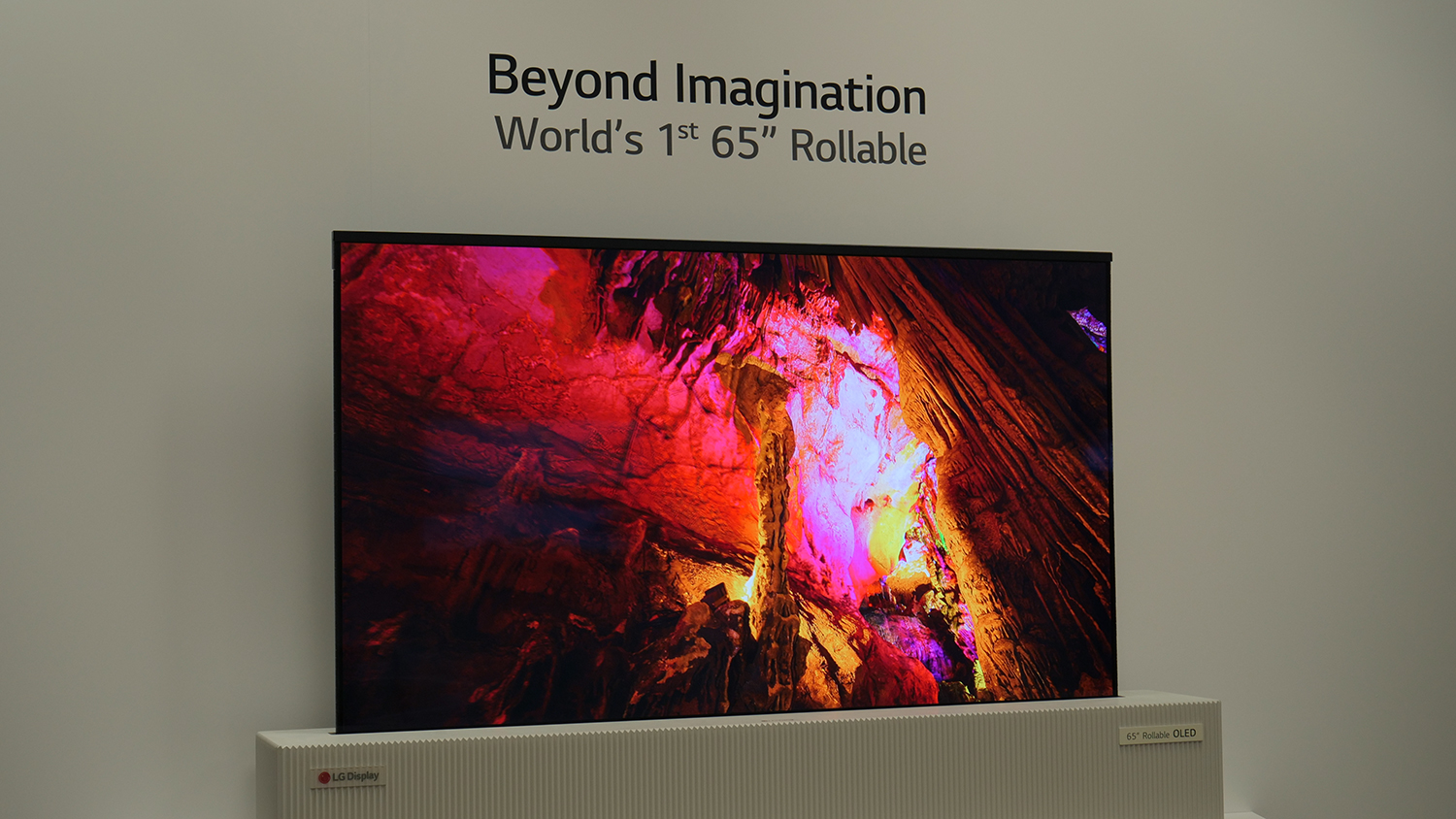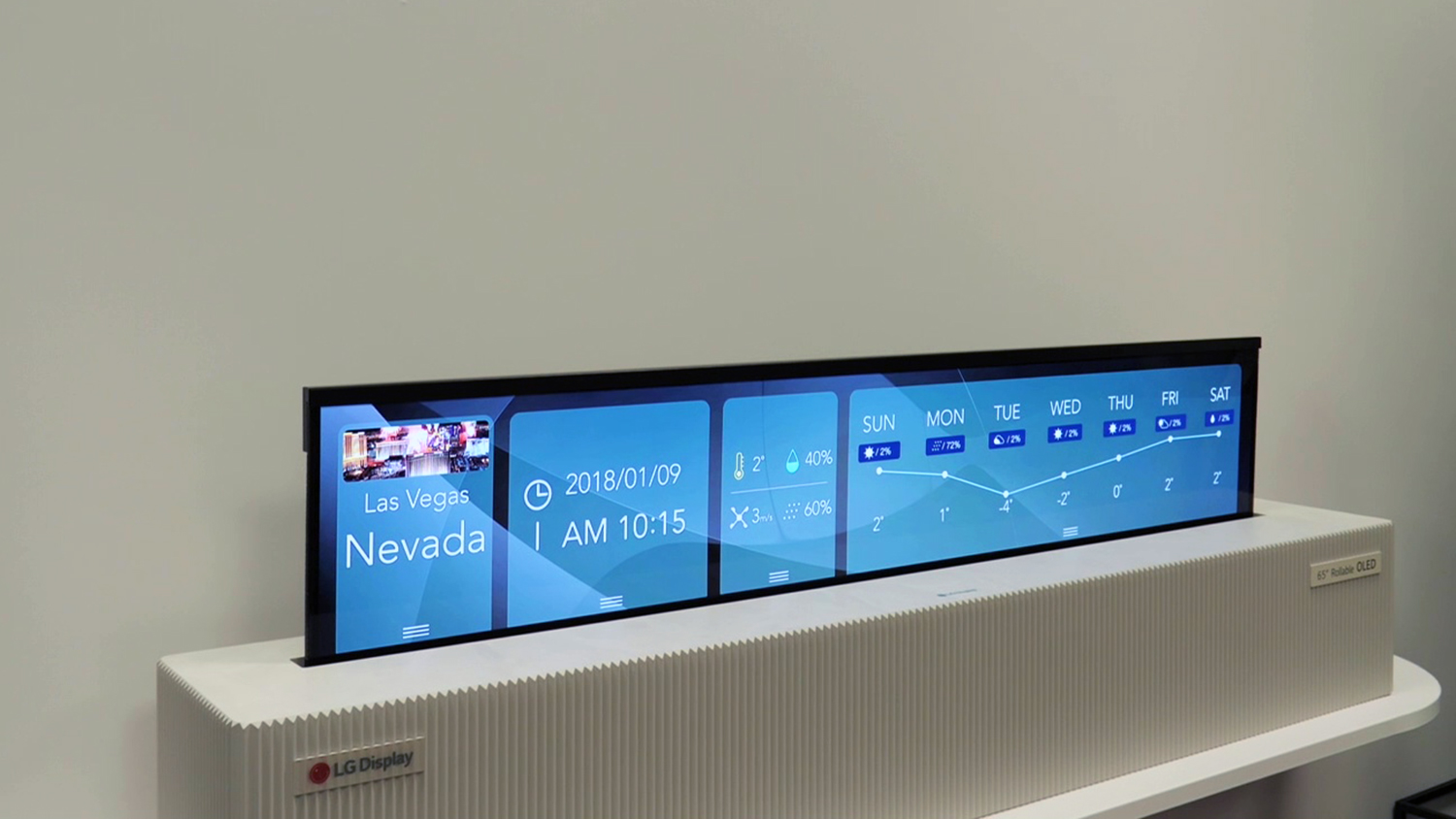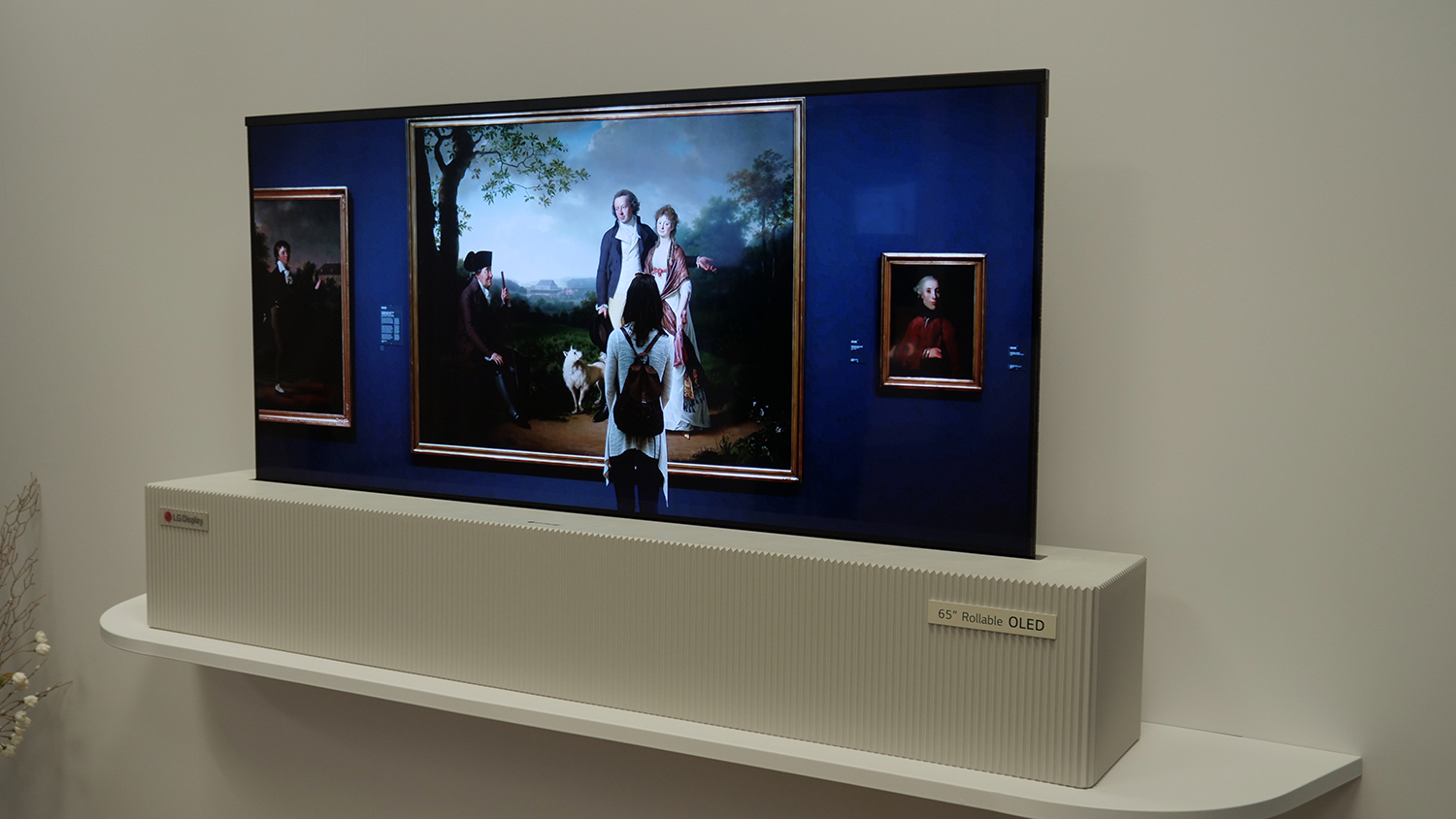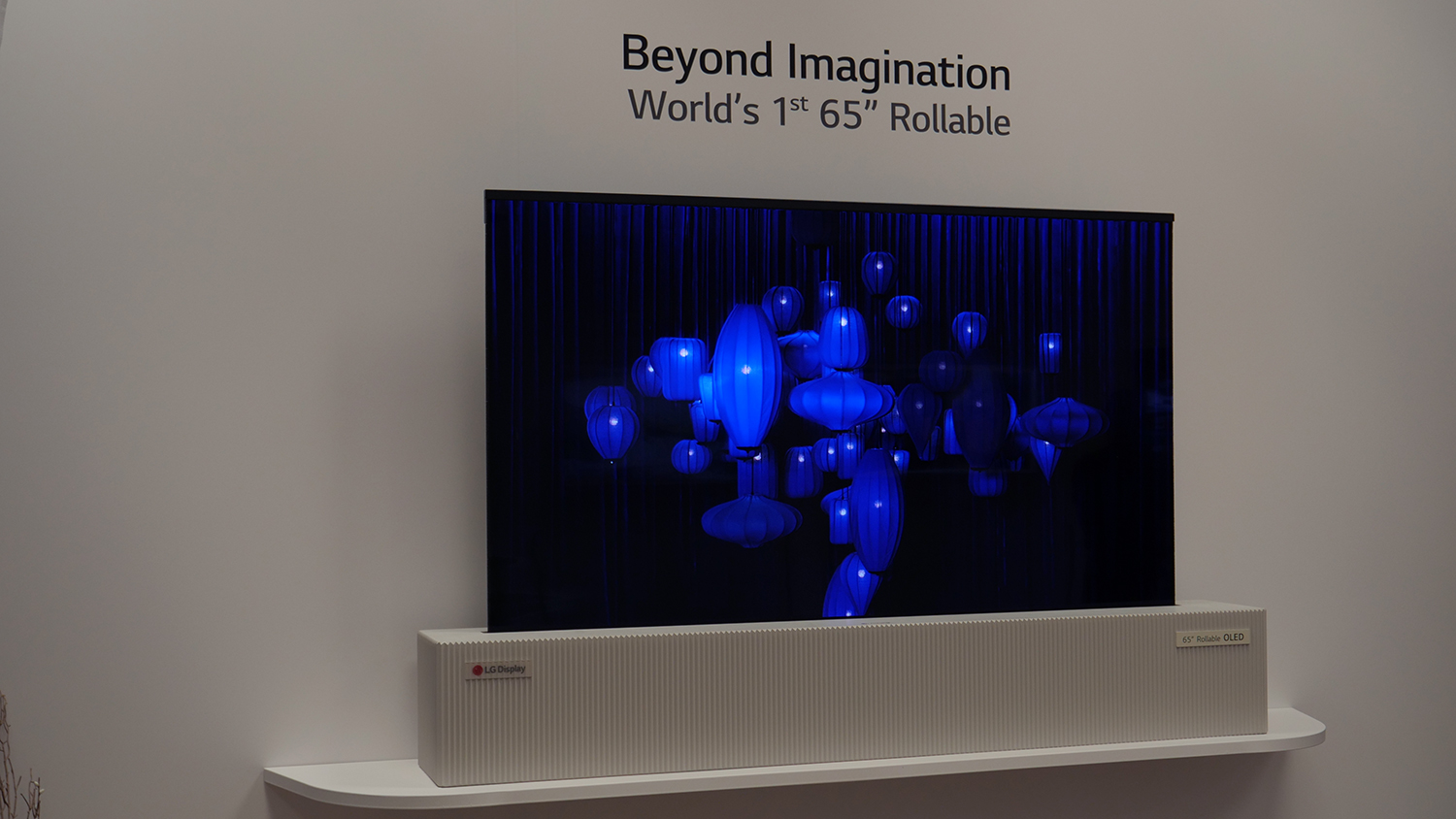After two years of watching white-gloved LG Display engineers gingerly roll up prototype OLED panels, the company has finally created a functioning roll-up OLED TV. Of course the idea of being able to roll up your TV, throw it in your backpack and take it wherever you want is a fun, futuristic idea, but LG has found a more practical application for a rolling OLED television. It is both literally and figuratively the most flexible TV ever made.
This is how it works: flexible OLED panel is mounted to a motorized spindle, set in a rectangular box. You can’t see the mechanics, all you see is the TV going up and down. But why would you want to be able to move your TV up and down like this?
The appeal of hiding your TV is clear. When you don’t want to see your TV, you simply put it away. But the practical applications go further than that. You can adjust the TV so that it’s sized for different aspect ratios. Admittedly, different aspect ratios have a smaller size, but this is a very cool application for watching movies.
You may have noticed that, when watching movies, you see black bars on the top and the bottom of the screen. This is because many movies are filmed in a 2.39:1 (or 21:9) aspect ratio, and a convention 16:9 widescreen TV can’t fit the picture. To accommodate, the letterbox bars are added so you can see the full width of the film. By rolling this TV down to obscure part of the screen, the rolling OLED TV can be resized to 21:9, and the black bars are unneeded.
Roll it down a bit further, and you can have an extremely low-profile display which could be used for computing, informational display, or simply for showing pictures. Use your imagination. What would you place in a slick strip of roll-up OLED TV?
The TV won’t be seen commercially in 2018, but it could very well be LG’s flagship offering in 2019. This time next year, we could be talking about when you could buy your own roll-up OLED. Between now and then, LG TV needs to take this display and build it into a TV. It will need a box to handle HDMI connections, the processing chips, optical digital audio output jacks, and all the other features we’re used to seeing in a TV. It’s also possible LG’s TV division could somehow fold a soundbar into the final design.
It’s also possible the TV could be hidden in a piece of furniture, so you wouldn’t have a TV in the room until you pressed a button on a remote control.
The roll-up OLED isn’t the only innovation to be seen at the private LG Display booth. We also got up close and personal with the 88-inch 8K OLED and we’ll be posting video of that TV very shortly.
As always, you can see every amazing TV at CES, along with all the other fun gadgets to be seen at the show via our dedicated CES page. You’ll also want to check out our YouTube channel where we’ll be broadcasting live all show long, starting January 9.







